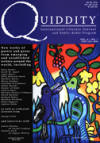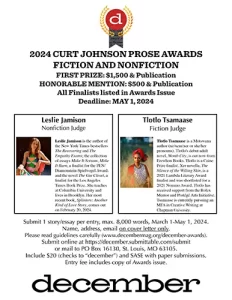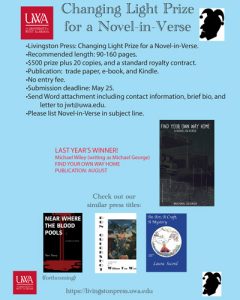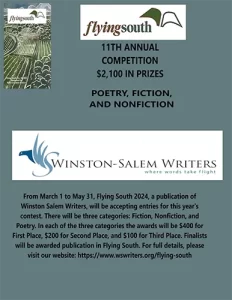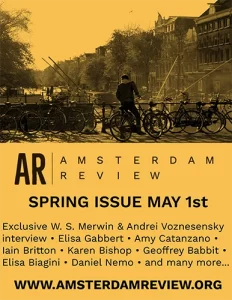Quiddity – Spring/Summer 2013
Quiddity has the variety anyone can enjoy: the new works of poetry, prose, art, and interviews are drawn from around the world. And the results and advantage of combining a literary and art journal with public radio programs is always intriguing. I don’t know how the radio station handled the paintings, but here we can view George Colin’s nine untitled pieces as support, counter-point, accompaniment, or just plain enjoyable.
Quiddity has the variety anyone can enjoy: the new works of poetry, prose, art, and interviews are drawn from around the world. And the results and advantage of combining a literary and art journal with public radio programs is always intriguing. I don’t know how the radio station handled the paintings, but here we can view George Colin’s nine untitled pieces as support, counter-point, accompaniment, or just plain enjoyable.
Among the really enjoyable prose pieces are Lucy Jane Bledsoe’s “Thaw” and Kelly Martineau’s “Bounty and Burden.” They provide us with events and views of life at stages of emotional heights that we can identify with, even though our experiences may been different. The feelings continue with Haider Al-Kabi’s “Little Hamida” and Patricia Caspers’s “Losing Your Daughter in the Bookstore.” Ethnic background and cultural differences have no effect on feelings in pieces such as these. We move with the emotions that come with loss and fear of loss, noting only different circumstances.
And in pieces such as these and Ruvanee Pietersz Vilhauer’s “A Different Place” and Nadia Ibrashi’s “Why Afghan Women Risk Death to Write Poetry,” the time and place reinforce our responses because they bring us closer to the people than the news media can. These are not news casts; these are the true reality shows. All of these pieces deal with events that we can relate to even when we haven’t been in a war zone or a natural catastrophe such as the characters in Vilhauer’s tsunami relocation or Ibrashi’s poetry.
The collection is as moving as it is ‘entertaining,’ but I have to strongly recommend a really fine piece by Trellan Smith, “A Leg to Stand On.” This piece is so poignant and nearly lyrical, I hate to call it prose. The rhythm and color of the phrasing carry the feeling as well as the message:
As if it mattered, we thought. As if all this attention to detail was necessary. As if that foot would feel a crooked seam under its heel. As if that foot had any use for a sock at all. As if, she seemed to suggest, we might each pull from our pockets and bags, backpacks and purses our own missing parts, stand-in confidences and fabricated facades, and bare their necessity and our minute care of them for all to witness. As if it might be possible to expose oneself and not die of shame.
For those interested in literary history and biography, there is an excellent interview with Jennie Battles, Site Administrator of the Vachel Lindsay Home State Historic Site in Springfield, Illinois. This blend of preservation conservation and insight into Vachel Lindsay’s life provides a fascinating view of the forerunner to today’s slam and “new American” poetry. We are not only introduced to Lindsay’s “tramp” years and his relationships with Monroe, Yeats, Sandburg, and Hughes, but also his concerns for the use of language and what would be today’s ‘political correctness.’
There’s more, of course; Quiddity provides quality and variety; for those who want added quantity, the biographies of the authors guide the reader to other sources and publications that I’m sure will be just as rewarding.
[www.quidditylit.com]

